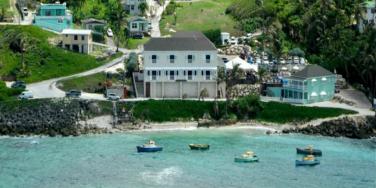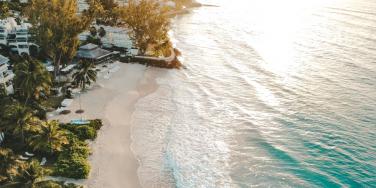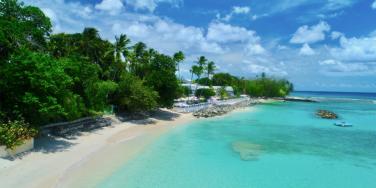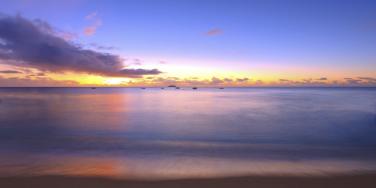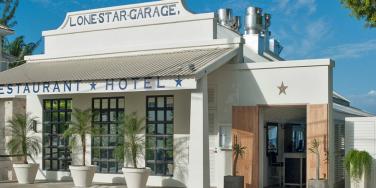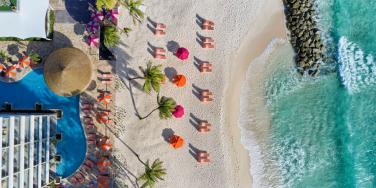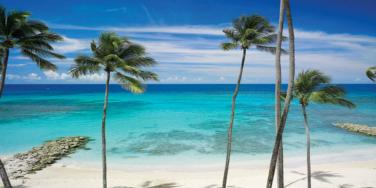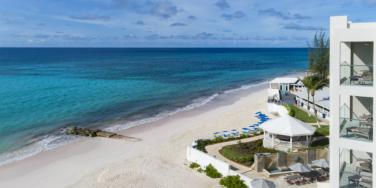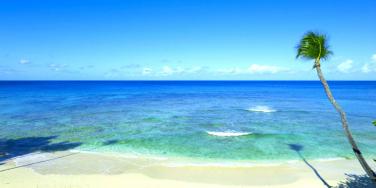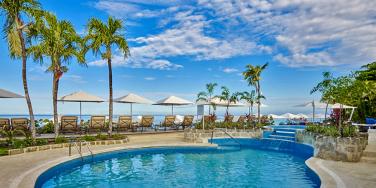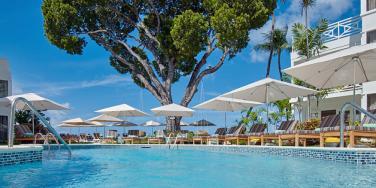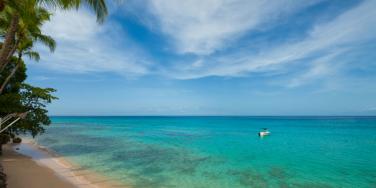Tropic Breeze uses cookies to improve the functionality of our website and your online experience.
By continuing to use this website, you are agreeing to our use of cookies. Please view our cookie policy for further information.
Barbados' distinction of having remained under British rule from its first settlement in 1627 to its independence on November 30, 1966, profoundly affected the culture of the island. This long and unbroken tenure has had a significant influence through every day Barbadian life and the infrastructure of the island.
As well as the traditional British influences, the more flamboyant African sway pervades local life as well, and the blend of the two makes for an unmatched cultural makeup. This fusion of British and African heritage ripples through all facets of daily living, from the foods and music to the house styles and street names. Even the language is affected, with Queen's English being the official 'language' while the colourful local dialect remains in common usage.
More than 70 per cent of the island's 260 000 people are direct descendents from the forced mass Africa migration of the late 1600s and 1700s-the slave trade. The island also has a peaceful blend of European (primarily British) settler blood with the Afro descendents, as well as small but vibrant Hindu (India), Arab (Lebanese and Syrian) and Jewish communities.
Whilst the island of Barbados now attracts hundreds of thousands of visitors to its shores, the first visitors arrived on the island nearly four hundred years ago. The original inhabitants of Barbados were Arawak Indians, who were driven off the island around 1200 AD by invading Carib Indians from Venezuela.
These first settlers travelled to the island by paddling long dugout canoes to cross the oceans and currents that challenge even today's modern sailing vessels. On the north end of Venezuela a narrow sea channel called the Dragon's mouth acts as a funnel to the Caribbean sea and the nearest island is Trinidad. It is a formidable passage of swift flowing water and cross currents which would have proved perilous for an open dugout canoe. However the Caribs were not put off by the treacherous journey and many of their people made the trek - families and whole villages, adventurers:- descendants of the first people who travelled across the Alaska land bridge, down through Canada and the Americas to the South.
The Caribs remained on the island until the arrival in the Caribbean of the Europeans in the 16th Century. Although the exact details remain unclear, some historians believe that the Spanish were the first to arrive on Barbados in the early 1500s and taken some of the Caribs as slaves. The other members of the tribe, when they witnessed the actions of the Spanish invaders, took fright and fled Barbados for the safety of the neighbouring islands.
Despite invading the island and driving away the settled population with slavery and 'European' diseases such as smallpox and tuberculosis, the Spanish did not maintain a long-term interest in the island, preferring to concentrate their colonisation on the larger Caribbean islands. This left Barbados available to the many other European colonisers who were exploring the area at that time.
The next European visitor to the island was the Portuguese explorer Pedro a Campos who stopped on Barbados in 1536 en route to Brazil. Though he had no interest in settling the island, it's thought that he left two legacies. Firstly he introduced pigs to Barbados with the intention of using them as a food source on return voyages. Secondly, it was Campos who named the island Los Barbados ('the bearded ones'), presumably after the island's fig trees, whose long, hanging aerial roots have a beard-like resemblance.
The first English ship touched the island on May 14th 1625 under the command of Captain John Powell. The island was therefore claimed on behalf of King James I. On February 17th 1627, Captain Henry Powell (brother of James) landed with a party of 80 settlers and 10 slaves to occupy and settle the island. This expedition established the island's first European settlement in Holmetown which was formerly known as Jamestown and by the end of 1628,the island population had grown to 2000.
The English colonists established a House of Assembly in 1639 - only the second such parliament established in a British colony, (Bermuda being the first) and along with a nominated advisory Council and the Crown's representative, the Governor of the island, ruled the Barbados in tandem with the state sanctioned religion, the Anglican Church.
The island was loyal to the Crown during Britain's civil wars and, following the beheading of King Charles I in 1649, Oliver Cromwell dispatched a force to establish his authority over Barbados. The invading fleet arrived in 1651 and by the following year Barbados had surrendered and signed the Articles of Capitulation, which formed the basis for the Charter of Barbados. The charter guaranteed government by a governor and a freely elected assembly, as well as freedom from taxation without local consent. When the British Crown was restored in 1660, this charter ironically provided Barbados with a greater measure of independence from the English monarchy than that of other British colonies.
Whilst the political wrangling continued a number of the colonisers with good financial backgrounds and social connections with England were allocated swathes of land on the island. Within a few years much of the island had been deforested to make way for tobacco and cotton plantations. During the 1630s, sugar cane was introduced to the agriculture. The production of sugar, tobacco and cotton was heavily reliant on the indenture of servants. White civilians who wanted to emigrate overseas could do so by signing an agreement to serve a planter in Barbados for a period of 5 or 7 years.
Within a few years the colonists had cleared much of the native forest and planted tobacco and cotton. They replanted their fields with sugar in the 1640s. With the growth in these industries and to meet the labour demands of the new crop, there was a need to look for a new workforce. New workers from Europe poured into Barbados in increasingly large numbers, quickly making the island not only the most populated of England's overseas colonies, but also one of the most densely populated places in the world. Initially whites from Britain were brought in, either as indentured servants or prisoners. For example, after the Somerset uprising, many West Country men were exiled or "barbadosed" by Judge Jeffreys. Nearly 7000 Irish were transported to the island during the Cromwellian period.
Barbados quickly acquired the largest white population of any of the English colonies in the Americas. In many respects, Barbados became the springboard for English colonisation in the Americas, playing a leading role in the settlement of Jamaica and the Carolinas, and sending a constant flow of settlers to other areas throughout the seventeenth and early eighteenth centuries.
However, as the cost of white labour in England went up, planters, on the advice of Dutch and Sephardic merchants, turned to West Africa for their source of manpower. Black slaves were imported in large numbers from the Gold Coast region in particular, especially from what is today the country of Ghana. The Asante, Ewe, Fon and Fante peoples provided the bulk of imports into Barbados. Nigeria also provided slaves for Barbados, the Yoruba, Efik, Igbo and Ibibio being the main ethnic groups targeted along with people from the Ivory Coast, Sierra Leone and Cameroon.
It is estimated that between 1627 and 1807, some 387,000 Africans were shipped to the island against their will, in overcrowded, unsanitary ships, which made the Middle Passage a synonym for barbaric horror. Over time, many of these individuals were re-exported to other slave owning colonies, either in the West Indies or to North America. However, and this is especially true for the seventeenth and early eighteenth centuries, the high mortality rate among slaves working on the sugar plantations necessitated a constant input of fresh slaves in order to maintain the work.
With the increase in the workforce and the financial backing from English companies, the Barbadians dominated the Caribbean Sugar Industry in these early years and by the mid 17th century the planters and merchants were thriving and successful.
The booming sugar industry continued to thrive into the next century despite the abolition of slavery. Although emancipation came to the island in 1834, the black islanders did not see an improvement in their living conditions. The power and riches still remained with the large estates which owned nearly all of the island's land and as a result the former slaves had little choice but to stay working on the plantations for meagre wages. Those who did leave ended up living in shanty towns in considerable poverty.
During the economic depression of the 1930s, unemployment shot upwards, living conditions deteriorated and street riots broke out. As a consequence, the British Colonial Welfare and Development Office was established, providing sizeable sums of money for Barbados and other Caribbean colonies. To counter growing political unrest, the British reluctantly gave black reformers a role in the political process. One of those reformers, Grantley Adams, became the first premier of Barbados a decade later and was eventually knighted by the Queen.
Barbados gained internal self-government in 1961 and became an independent nation five years later. As the sugar industry declined after the Second World War, tourism steadily increased its share of the island's economy. By the early 1990s tourism was by far the largest industry on the island whilst the sugar business had declined into receivership.
Barbados gained self- government in 1961 and full independence in 1966. The head of the government is the Prime Minister. The legislative body is the Parliament. It is made of the House of Assembly, which is elected by a popular vote system, and the Senate, which is appointed by the government. Barbados is a member of the British Commonwealth, and they recognize the British monarch, represented by the governor-general, as the head of state.
The recent years have seen a stable and peaceful Barbados. Today the country continues to welcome thousands of visitors to its shores. Those who come today are as impressed by the islands scenic beauty as those first explorers hundreds of years ago.
